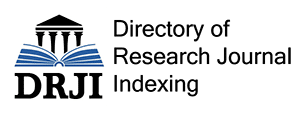The Economic Interests of the USA in Georgia (the Beginning of the 20th Century)
DOI: 10.55804/jtsuSPEKALI-18-6
The research was carried out with the support of Shota Rustaveli National Science Foundation of Georgia (PHDF-21-1547).
The history of the USA’s interest in Georgia's economic potential is as long as the history of the Georgian-American contacts. It can be said that the first Americans who traveled to Georgia were interested in its important trade route and ore. For example, George Ditson, who traveled to Georgia in 1847-1848, often wrote in his travel diaries about the trade potential of the Caucasus, in particular, of Georgia. He paid great attention to the ports of the Black Sea and once noted that Redut Kale - the port located on the Black Sea - facilitated trade with the East. While meeting with Count Vorontsov, he actively discussed the issue of trade on the Black Sea [Ditson, 1850:308-309]. In the 19th century, other American travelers also talked a lot about the economic potential of Georgia and the Caucasus region - Elias Smith and Harrison Gray Otis Dwight in the work "Missionary researches in Armenia"; William Curtis in the travelers’ diaries entitled “Around the Black Sea”; other American travelers of the 19th century [Jagunava, Nodia, 2021].
Since the second half of the 19th century, the US national interest has been to find economic benefits in different parts of the world. The USA aimed to actively introduce American companies to the world market and took the reins in hands. The latter would automatically bring political influence as well. The United States' growing interest in foreign markets was partly due to the economic crisis of the 1870s and the 1890s, which resulted in the reduced consumption and overproduction. In 1880 William Evarts - U.S. Secretary of State - said: "We had developed manufacturing and agriculture until the internal conditions forced us to look abroad". The United States needed to expand its foreign market, otherwise "it would be smothered with its own fat" [Gentleson, 2015:131].
At the end of the 19th century, based on the economic interests, the US consulates were opened in Batumi and before that, in Odessa. Sending its representation to Batumi was a testimony to the fact that the US had growing interests in the region. In any case, a consular agent has always been a representative of economic interests of the USA. One of the US ambassadors in Argentina told the journalists that he was "the main lobbyist for the business of his own nation" [Gentleson, 2015:62]. It was the same in case of Georgia.
The interest in Georgia (on the political-economic trajectory of the USA) might become particularly active and visible from 1917-1918, when the Caucasus became independent from Russia. In May of 1918, three new states - Georgia, Armenia and Azerbaijan - emerged in the Caucasus region. The Americans activated the diplomatic bridges and sent missions to the Caucasus. However, the USA did not show a clear support to Georgia. This was determined by several factors. Firstly, the government of Georgia, which was socialist, nationalized the private property, including various wealth, in the hands of the foreign companies, without any compensation. How economically unfavorable this was for the USA can be easily imagined if we have the slightest idea of the Americans’ attitude to the left-wing ideology – socialism – especially at the time, when a private property was supposed to be inviolable. Supposedly, the USA's support for the Democratic Republic of Georgia could be great, if in its government there would be national democrats instead of social democrats.
America's economic interests might extend to the entire Caucasus and its natural resources, but it was impossible to spread these interests without Georgia. The main conduit for trade raw materials was the Georgian road - the Caucasus Railway - which together with Baku-Batumi oil pipeline was the main means of transporting Baku oil and other trade raw materials. As is known, by the 19th century Russia had been the main supplier of oil to the world. By 1916, 81% of its supply had been Baku oil [Gillette, 1973:478]. From the ports of Poti and Batumi, Chiatura manganese (which was mined on Georgia’s soil) was also taken abroad. These two ports should have been for other means, whether it was copper or other withdrawals. In addition, the city of “Tiflis” served as the main trade hub of the Caucasus region.
The United States' economic interest in Georgia was particularly visible in the beginning of the 20th century, when along with unofficial circles, the official US state agencies became interested. The latter prepared documents that discussed Georgia in detail.
As it was mentioned, America opened the consulate in Batumi. It was responsible to provide the State Department (Batumi’s consul was subordinate to the Secretary of State) with information about the situation in the region, including the economic one. In addition, the consuls often lobbied the interests of private companies. For example, it is known that William Horwood Stewart, the American vice-consul in Batumi, worked for several companies, for example, Mac-Andrew Forbes Company, F. A. Matinevich & Co. and other British firms. Stewart also lobbied the interests of American copper miners in the Caucasus region [The United... 2011:1293]. We will discuss the details of the activities of the consuls below. Before that, let us consider how the US government agencies used the information, which eventually converged in one of the departments of the US "Department of Commerce", namely, in "Bureau of Domestic and Foreign Trade". The latter was an organization that constantly monitored economic processes taking place in different parts of the world. The agency aimed to promote a foreign trade of American companies. For example, by 1923, up to 15,000 American companies had joined the exporters of "Bureau", who daily addressed thousands of questions to it in order to get answers. The questions were related to issues of foreign trade, which in turn had to be investigated by the bureau's employees. If a particular firm was interested in specific details of a foreign coal trade, the bureau had to find information and provide it to the entrepreneur [Klein, 1923:132.]. Accordingly, "Bureau of Foreign and Domestic Trade", which functioned under various names at different times, cooperated with other agencies within the framework of state interests and collected information about trade and economic potential of different countries and regions of the world.
In short, the mentioned bureau was a governmental information service agency for American companies. Its purpose was facilitation of export of products for American companies, which in the far-reaching plan would bring the economic progress and the US’s trade economic hegemony in the world.
The bureau actively cooperated with the American consulates located in different foreign cities. In many cases, a specific American company could receive information of its interest after communicating directly with a consul. This took a lot of time and was fraught with difficulties. The bureau simplified this matter - it received information from all consulates through the consuls and sorted relevant documents alphabetically or by another method, which made it easier to provide information to American companies upon requested. “For example, a businessman living in New York may write to the American consul general or commercial agent in Calcutta, India, for getting information. He can call to the bureau and get the information he wants in 10 minutes” [Klein, 1923:133].
It must be noted that "Bureau" received the mentioned information from the US Foreign Ministry for Trade Interests. This fact emphasizes that function of a consulate was not limited to supervision of economic and trade issues. The US consul was also busy with providing a political information to his country.
The United States of America constantly paid great attention to the mentioned bureau and its policy. For the purpose of a foreign trade, even the first President - George Washington - sent trade agents to many countries of the world. They were supposed to promote a foreign trade. "The U.S. Commercial Service" still exists and promotes the foreign trade of American companies. It has representatives in most countries of the world [Kumar, 2017].
As it was mentioned, "Bureau of Foreign and Domestic Trade" received reports from the consulates on a daily basis. Among them were the consulates of Batumi and Tbilisi in Georgia. The example of this is the report of Hooker Doolittle (1 July 1920), the US vice-consul in Tbilisi. It was recorded and published by the Department of Commerce. The report mentioned that the Transcaucasian region, as a geographically and economically unified entity, was disintegrated and three new states were formed on its place [Doolittle, 1920:1].
In this report, Doolittle discussed the socio-economic situation of the population of Georgia. He noted that Georgia’s population was divided into three classes, namely: 1) the remnants of the feudal aristocracy, who were called the Caucasian princes (to express the titularity of the Georgian aristocracy, the Americans often used the word "Prince" - P. J.); 2) urban bourgeoisie, shop owners and merchants. Representatives of the bourgeoisie in Tbilisi were mainly the Armenians. Georgian merchants lived in a relatively small town; 3) peasants, who made up the majority of the Georgians, who were engaged in agriculture, sheep breeding and stockbreeding [Doolittle, 1920:1].
Doolittle also discussed the devaluation of the Georgian bon. He wrote in the report that the Georgian bon had increased from 20 to 200 in relation to the price of gold from the beginning of 1919 to the end of the same year, which was an incredible rate of devaluation. Doolittle believed that the reason was the intervention of the government, which had confiscated (nationalized) all the minerals and had established the government monopoly on import and export. Doolittle wrote that the devaluation had been caused by the amount of excess money. In addition, in his opinion, the reason had been the lack of manufacturing and resources as well as the consequent reduction of trade [Doolittle, 1920:2].
The main essence of Doolittle's report was the criticism of the economic policy of Georgia’s socialist government. Doolittle believed that the country's economic crisis had been caused by the wrong steps of the state. The American consul cited the examples - the nationalization of the country's rich mineral resources and monopolization of export and trade by the state.
Doolittle thoroughly studied the economic situation in Georgia. His economic education was evident from his report. It is obvious that he was a follower of the liberal economic policy and capitalism. For this reason, he criticized the socialist government of Georgia. Doolittle criticized the banking system and wrote that the banks were the remnants of the Russian Empire, which had mainly been nationalized and looted [Doolittle, 1920:3].
In his report, Doolittle especially emphasized the importance of the port of Batumi. In his opinion, Batumi was "of vital importance" for the export of Baku's oil to the international market. According to him, several liners started regular transportation of oil in 1919: the Paquet line from Marseille, the Cunard Line from the British port, the Lloyd Trentino from Italy and the Green Star Line from New York [Doolittle, 1920:4].
In his report, Doolittle focused on agriculture. He wrote that 90% of the country's population was engaged in agriculture. However, this field was not successful due to the fact that the peasants still used primitive means of production [Doolittle, 1920:5].
In the report, Doolittle made recommendations for American companies. He indicated those trade products that were vital to the region. The American vice consul wrote that the region had been emptied of foreign companies since the war. This had freed up the market for new companies. Doolittle supposed that the region was an attractive place for selling goods of primary use and luxury goods. He also pointed out that there was a great demand for the following products: paper, medicine, clothing, chemical products, leather products, etc. Doolittle thought that the Americans could seize this market [Doolittle, 1920:6].
At the end of the report, Doolittle listed in detail all those materials, goods, things or products that were in demand in Georgia. Therefore, American companies could import and sell them there [Doolittle, 1920:7].
The reports similar to Doolittle's one were frequently sent to the United States Department of Commerce, specifically to the Bureau of Foreign and Domestic Commerce. For example, on 1 September 1919, Boris Baievski sent the report to the American agency and provided the detailed economic data about the Caucasus. It seems that Baievski was an employee of the American consulate, or an agent. He noted in his report that the US consuls collected information about the economic potential through a number of official means. It seems that the respective consuls had access to documents officially processed by the state (descriptions, etc.), other types of documents, papers, etc. [Baievski, 1919].
In the report, Baievski sent the detailed information about the Caucasus and Georgia, starting with the geographical location and ending with the statistics of the economic potential. To emphasize the scrupulousness of his report, here are some quotes: “Among animals, a bear is widespread. Tigers and panthers live on the coast of the Caspian Sea, near Lenkoran. In the mountainous area, you can meet bison, deer, boars, foxes, reindeer, antelopes, etc. In western Georgia, in the surroundings of the Rioni, there are many pheasants. In total, 400 species of birds live here" [Baievski, 1919:3].
The document also described the population of the Caucasus in detail. For example, the author mentioned that according to the official documents, the description of Batumi District of 1 January 1915 was as follows: the population was 186,000, the area - 2,693 square miles, the density of the population - 69 people per square mile. The author's information about Kutaisi Governorate is as follows: the area - 8,145 square miles, the population - 1,070,300, the density of the population - 130 people per square mile. Sukhumi District: the area 2,545 square miles, the population - 147,600, the density - 58 people per square mile. Tbilisi Governorate: the area - 15,776 square miles, the population - 1,394,800, the density - 88 people per square mile. According to his data, at that time, the population of Georgia in Sukhumi and Batumi districts, as well as in Tbilisi and Kutaisi governorates was as follows: the total number - 2,798,700 people [Baievski, 1919:3].
The educational system was studied statistically in the report. For example, according to the author's report (which, as the author claimed, was based on the state documents), by 1913, the number of schools in the North Caucasus had been 3,938, where had studied 302,640 pupils (199,439 boys and 103,201 girls). According to Baievski’s data, 132,904 boys and 41,815 girls were educated in 2,965 schools of the South Caucasus [Baievski, 1919:4].
The report contained the detailed information about the economic potential of the region. According to it, the Caucasus region produced 69 percent of Russia's tobacco supply. The author of the report noted that, for example, tobacco grown on Turkish seeds in the Sukhumi District made 30 percent of the total supply of Russia. Baievski broke down these data in detail in the table, namely, the number of planters and the area of plantations per region [Baievski, 1919:7].
The same report stated that by 1913, there had been 190,000 acres of vineyards in the Caucasus, where 40,000,000 gallons of wine had been produced annually. 31,124 tenths of the said area came from Kutaisi Governorate, 32,485 - from Tbilisi Governorate, 3,098 - from Sukhumi District and 1469 - from Batumi District. It is also mentioned that "the wine produced here is of an excellent quality and where the achievements of the modern chemistry are used in production, the quality of wine is in no way inferior to French and Italian wines" [Baievski, 1919:7-8].
The report also focused on the progress of the tea industry in Batumi District and Kutaisi Governorate. It was mentioned that even in 1895 there were only 6 acres of tea plantations. In 1913 the increase to 2,210 acres was identified. In 1895 only 85 pounds of tea were harvested, but in 1913 the increase to 1,220,000 pounds was identified. The author also pointed out that the tea production was still at the experimental stage, although it would have a great success in the future [Baievski, 1919:8].
The same document mentioned that various products were exported from the Caucasus to the United States. For example, it was stated that in 1913 woolen products worth of $848,581 were imported from the Caucasus to the United States and in 1914 the same products worth of $608,825 were brought from the Caucasus to the USA [Baievski, 1919:10]. The report mentioned that in many cases, the products exported from the Caucasus were re-exported to the USA. For example, as the author noted, a part of seafood exported from the Caucasus region was taken to Germany, from where it was brought to the USA [Baievski, 1919:13].
The document mentioned that the Americans were especially interested in Guria (in relation to oil). The report stated that one of the places in the Caucasus, where oil was extracted, was Guria. It was interesting because of its location, namely, its closeness to the sea [Baievski, 1919:14].
According to the author of the report, Chiatura’s manganese was the world's richest deposit. According to his information, the Russian geologists calculated that the resource of Chiatura’s mines was 1,070,000,000 tons of manganese, which would fill the reserves of Europe and the USA for half a century. "Besides - the author emphasizes - Chiatura’s ore is of the highest quality" [Baievski, 1919:21].
To better understand the importance of Chiatura’s manganese, let us quote the numbers given in the report. By 1914, two largest manganese exporting countries in the world had been Russia and India. In 1914, 693,824 tons of manganese were exported from India and 737,300 tons of manganese were mined in Russia. The largest part of Russian manganese came from Chiatura’s manganese. For reference, in the same year. For reference, the US figure for that year was 2,077 tons of manganese [Baievski, 1919:24].
It should be noted that the author of the report indicated that he had taken some references from Davit Ghambashidze's book "The Mineral Resources of Georgia and the Caucasus - Manganese Industry in Georgia", which was published in London in 1919 [Baievski, 1919:24].
In Maievski's report, special attention was focused on the potential of water energy in the region, especially, in Georgia. The author noted that the potential was not properly used. For example, there were 18 power stations in Tbilisi, some of which belonged to the Belgian company Belgian Tramway co., but were owned by the local dignitaries. The author noted that Gori power station belonged to "Prince Amilakhvari". It was mentioned that there were two such power stations in Kutaisi, on the Rioni. Ajamet, Borjomi, Akhaltsikhe, Batumi and Akhalkalaki had similar power stations for the production of light energy. Sukhumi was supplied with the power station of 600 horsepower. It was also mentioned that the production of electric energy would significantly contribute to the production of various manufactures and ores in the country [Baievski, 1919:40].
To make the final assessment of the above reports, we should mention that their authors listed and characterized in detail the natural minerals available throughout the Caucasus region, starting with oil and ending with antimonite. The authors provided American companies with the detailed information on the ore production and commerce. The agricultural products - starting with wool and ending with tobacco - were also described in detail.
Accordingly, the employees of Batumi consulate or other types of agents sent a rich information to the US state agencies, which, in turn, provided information to American companies. This had the specific expression - the presence of American merchants in the port of Batumi, in Tbilisi and other Georgian cities became common. Ships loaded with American trade goods regularly arrived in Batumi. In 1914 the American goods worth of 4-4.5 million dollars were sold/imported in the Caucasus region. In exchange, the goods worth of 2,238,000 to 2,738,000 US dollars were exported from here to the USA [Baievski, 1919:43]. In 1913 timber materials, wine (very little), tobacco, almonds, walnuts and other goods were exported from the port of Batumi to the USA. All of these - the export to the USA, its price, quantity - was described in detail by the American consular representation in Batumi [Baievski, 1919:43]. In the above-mentioned report, Boris Baievski wrote that the American consul in Batumi had mobilized 1 million dollars by 1919, "in order to facilitate the export of different products from the Caucasus to the USA". It seems that at that time Armenian merchants from Tbilisi had close trade relations with the Americans. They prepared the goods worth of 750,000 dollars for export in Tbilisi. On the other hand, the author wrote that America tried to mobilize its goods of the same value to barter by exchanging goods. In his opinion, barter would be the most favorable trade route between America and the Caucasus, because in the region, especially in Georgia, the exchange rate of the local currency was rapidly changing and depreciating. Under these conditions, a better form of trade for the Americans would be exchange of goods [Baievski, 1919:54-55].
In conclusion, we can say that the United States of America became interested in Georgia precisely because of its economic resources even when Georgia was not an independent state. In the mentioned report of Baievski, we come across the important and noteworthy phrase - "Large grazing interests could be developed in the Caucasus" [Baievski, 1919:55]. It can be understood as follows: "Profitable interests can be developed towards the Caucasus". In my opinion, this very phrase expresses the attitude of the USA towards Georgia and the Caucasus in general. At that time and even nowadays, America's foreign policy has been influenced by several interested groups. These groups could be represented by influential people hired by foreign governments – lobbyists, whose words were important for the American society, whether they were politicians (congressmen or employees of different government agencies) or representatives of different legal firms. Foreign policy was significantly influenced by identity groups: the American Jews, the American Greeks, the American Armenians, etc. Representatives of these groups tried to influence America's relations with the countries of their origin. The formation of the US foreign policy was also significantly influenced by economic groups, different business corporations, for example, the American giant oil company Standard Oil [Gentleson, 2015:68-69]. As some researchers believe, different corporations had a significant influence on the US foreign policy. A clear example of this was the US policy towards Guatemala and Iran, where in 1953 Mohammad Mossadegh - the Iranian Prime Minister - was overthrown by the American forces, because he was planning to nationalize oil companies. Instead of Mossadegh, the Americans brought the Shah to power in Iran. He would return to the Americans the companies nationalized by them [Gentleson, 2015:176]. According to Bruce Gentleson, "the decisive factor in the formation of the American foreign policy was the interests of multinational corporations, big banks and other leaders of the world capitalism" [Gentleson, 2015:176].
References
| Gentleson B. 2015 |
American foreign policy. Tbilisi: Ilia State University Publishing House. |
| Jagunava P. Nodia I. 2021 |
American travelers in Georgia (the 1st half of the 19th century). Tbilisi: Ivane Javakhishvili Tbilisi State University Publishing House. |
| Baievski B. November 3, 1919 |
Supplement to commerce reports, daily consular and trade reports, issued by the bureau of foreign and domestic commerce, department of commerce. Washington, D.C. |
| Curtis W. E. 1911 |
Around the Black Sea - Asia minor, Armenia, Caucasus, Circassia, Daghestan, The Crimea, Roumania. New York: Hodder & Stoughton, George H. Doran Company. |
| Ditson, G. L. 1850 |
Circassia, or, a tour to the Caucasus. New York: Strixger & townsexd. |
| Doolittle H. A. November 10, 1920 |
Supplement to commerce reports, daily consular and trade reports, issued by the bureau of foreign and domestic commerce, department of commerce. Washington, D.C. |
| Gillette P. S. 1973 |
American Capital in the Contest for Soviet Oil, 1920-23. Soviet Studies. 24 (4). |
| Klein J. 1923 |
Work of the Bureau of foreign and domestic commerce. Advocate of Peace through Justice, 85 (4). |
| Kumar A. M. 2017 |
The U.S. Commercial Service: Serving SMEs and U.S. businesses around the world. https://www.huffpost.com/entry/the-us-commercial-service_b_14106484 |
| Smith E. Dwight H. G. O. 1834 |
Missionary researches in Armenia: including a journey through Asia minor, and into Georgia and Persia, with a visit to the Nestorian and Chaldean Christians of Oormiah and Salmas. London: George Wightman, paternoster row. |
| The United… 1906 |
The United States Department of State/Papers relating to the foreign relations of the United States with the annual message of the president transmitted to Congress December 3, 1906. Foreign Relations of the United States. University of Wisconsin Digital Collections. http://images.library.wisc.edu/FRUS/EFacs/1906/reference/frus.frus1906v02.i0020.pdf |













